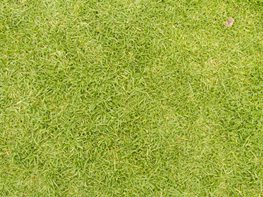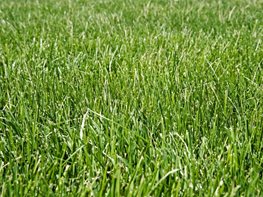Best Types of Grass for Your Lawn
Compare different types of grass that make good lawnsWhen choosing the best lawn variety, first select grasses that will thrive in your local environment and specific site conditions (sun, shade, etc.) From these choices, pick one that will best suit the needs of your whole family, including children, adults and pets. The most important factor to consider in selecting a lawn grass is its ability to survive the intended use of the yard. The first consideration is sunlight. Is there adequate sunlight in the garden space to support shade-intolerant varieties? The second big consideration is whether the local climate favors cool-season or warm-season turf varieties. You'll also have to consider whether you want to plant grass seed or have sod installed for an instant lawn.
Common Types of Grass
Here's a quick look at what grass types are commonly grown in the U.S. Scroll to the end for a more detailed comparison.
Bermuda
This warm-season grass is a good choice for lawns with heavy foot traffic.
St. Augustine
Consider this type of grass if you need something that tolerates shade.
Kentucky Bluegrass
A cool season grass that's popular for its deep color and excellent texture.
Ryegrass
Perennial ryegrass is a fast grower that has a shiny appearance.
Zoysia
This warm-season grass forms a thick carpet, but can be slow to establish.
Seashore Paspalum
If you need something highly salt tolerant this grass will do well.
Red Fescue
This creeping grass is known for having low water, mowing and fertilization requirements.
Let's say you want to use a "tough" grass to accommodate an active sports playing family. The "toughest" grasses (considering only that characteristic) are the sports-turf grasses like common Bermuda, hybrid Bermuda or zoysia. These grasses have a trailing growth habit and handle heavy foot traffic better than cool-season grasses (like fescues). They also tend to fill in bare areas caused from heavy foot traffic or dog urine spots more quickly, and they have a higher salt tolerance (urine). Good choice right? Not so fast. These grasses grow very poorly in the shade. No matter how inherently tough these grasses are, they are simply unsuitable in shady areas. This is true whether the shade is due to trees, the sun's angle as seasons change, or compass location (north and east facing locations are cooler and more shaded than areas facing west or south ). Furthermore, these varieties are only "tough" during their growing seasons: spring, summer, and fall. They go dormant (turn brown and do not grow) during cooler winter months. When grasses are in a dormant state, foot traffic can quickly wear a muddy path through the turf thatch.
Lawn Grasses for Sun & Shade
For sunny areas where winter dormancy is acceptable, the best lawns are warm-season turf varieties like Bermuda, hybrid Bermuda, kikuyu and zoysias. These trailing grasses are excellent at filling in bare spots and recover quickly from foot traffic. They also are very salt tolerant and do not burn easily from pet urine (high in salts and nitrogen). Warm-season grasses are also deep rooting and drought-tolerant. These types of lawns that go dormant are also best for cold climate areas and can typically handle being snowbound. On the downside, because these grasses trail, plan on a little extra work every couple of years to "de-thatch" and keep your lawn well groomed.
For sunny areas where year-round green is a must, consider hardy grasses like tall fescues and dwarf tall fescues. These types of grasses are referred to as "cool-season" grasses and stay green year-round in temperate climates. They will die or go severely dormant in snowbound communities. Fescue grass varieties are primarily "clump" grasses and while they do "tiller" (spread wider), they do not actually trail. As such, they are appropriate for low to medium foot traffic. Fescues' nontrailing growth habit can often make maintenance easier because these lawns stay in the space for which they were intended and do not invade adjacent planters. Fescues are deep rooting and drought tolerant, but not salt tolerant, so dog urine can burn spots. This is an important consideration if you share your yard with a pet. Fortunately, these unsightly spots are easy to seed and repair.
For shady areas, bluegrass (often called Kentucky Bluegrass) is a cool-season variety that has a higher shade tolerance than fescue. Bluegrass blends (over 100 cultivars are available) have a softer, finer blade and grow easily from seed or sod. This grass can actually fill in bare spots more quickly because it spreads by rhizomes (a horizontal underground stem that sends out its own roots and shoots) and tillers to create a dense sod lawn. A warm-season grass with a high shade tolerance is St. Augustine. This runner-type grass does well in both sunny and shaded areas.
Why are turf varieties sold under different names?
Dwarf fescue turf varieties are grown from seed by many sod farms. To differentiate their sod, these farms use different names in their marketing materials. For instance, Marathon 2, Medallion, Centurion, Elite, Bonsai and Legacy are all brand names for similar dwarf fescue turf varieties. All this name calling can be confusing. Focus on the quality and reputation of the sod farm you are buying from and forget about the brand names.
Mixed Lawns Are Often Best
Lawns made up of mixed varieties can improve hardiness. Most sites are a mix of conditions, so a suitable grass would logically be a mix of grass varieties. Unfortunately, sod growers produce only the most popular varieties which, except for a few, are mono-cultures. For sites with mixed conditions, planting your lawn with seed instead of sod may be your best bet. Even overseeding an existing sod lawn can help it resist foot traffic and adapt better to site conditions.
For instance, if you add 15% Kentucky Bluegrass to a fescue lawn, the bluegrass, with its spreading growth behavior and improved shade tolerance, will help fill in foot traffic and urine spots. Bluegrass and fescue blends help each other adapt to site conditions. Fescues are much more drought tolerant and deeper rooting than bluegrass, but as the roots intertwine and grow together, the deeper fescue roots actually bring water up to the bluegrass through osmosis and improve its drought tolerance, resulting in a hardier turf blend.
Seed blends of different grasses naturally adapt to a changing environment, whether it be changes from sun to shade, hot to cool, wet to dry, or season to season. A good example of a high-traffic blend is a "sports field" seed mixture containing a Bermuda grass and turf-type perennial rye grass (which tolerates shorter mowing heights).
Compare Grass Types
| GRASS TYPE | LIGHT REQUIREMENTS | DROUGHT TOLERANCE | GROWING SEASON | GROWTH RATE | HEAVY FOOT TRAFFIC TOLERANCE | UNIQUE CARE REQUIREMENTS |
|---|---|---|---|---|---|---|
|
Tall fescue* |
Sun |
Good |
Year-round |
Fast |
Poor |
For better fill-in properties, add 15% Kentucky Bluegrass. |
|
Dwarf tall fescue* |
Sun |
Good |
Year-round |
Moderate |
Poor |
Tolerates a short mowing height. |
|
Double-dwarf fescue |
Sun; tolerates light shade |
Good |
Year-round |
Slow |
Poor |
Not recommended for active play or large pets. |
|
Hybrid Bermuda |
Sun |
Good |
Warm season |
Fast |
Excellent |
Not suitable for shaded areas. |
|
St. Augustine |
Tolerates shade |
Good |
Warm season |
Moderate |
Moderate |
Very sensitive to chemical weed controls. |
|
Kentucky Bluegrass* |
Sun to semi-shade |
Poor |
Cool season |
Moderate |
Good |
Avoid hot full-sun exposure. |
|
Perennial ryegrass* |
Sun |
Fast |
Good |
Does not self-repair; plan to spot seed. |
||
|
Zoysia grass |
Sun |
Good |
Warm season |
Excellent |
Requires annual dethatching. |
|
|
Seashore paspalum |
Sun |
Moderate; highly salt tolerant |
Warm season |
Fast |
Good |
Trails aggressively; weekly edging required. |
|
Creeping red fescue |
Sun to semi-shade |
Good |
Cool season |
Slow |
Moderate |
No mowing required. |
*The performance of these grasses can be enhanced by mixing with other grass varieties.

 Backyards
Backyards
 Front Yards
Front Yards













